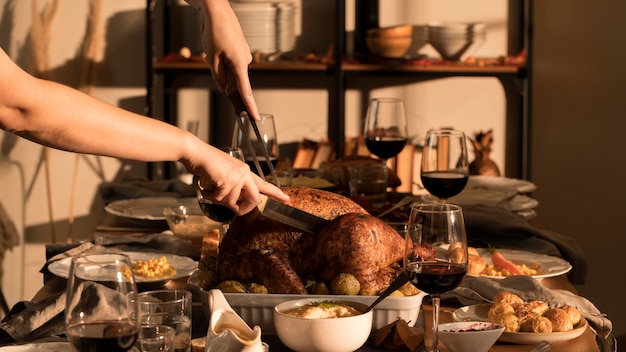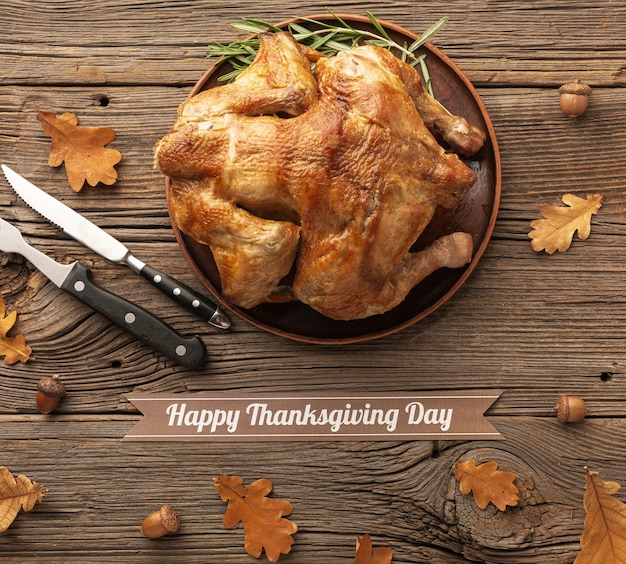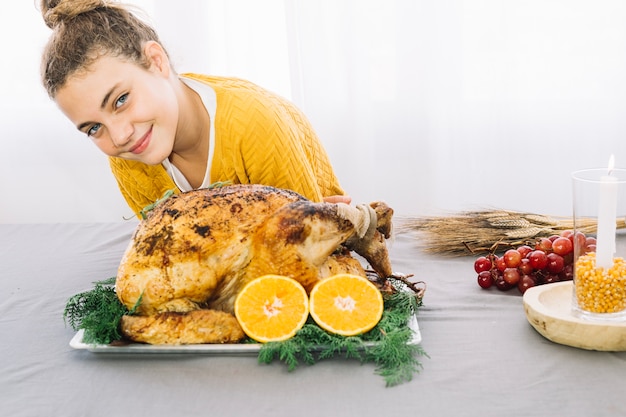(Part 1) The Basics: turkey weights and Cooking Times

First things first, you need to know how much turkey you're dealing with. The weight of your bird is the key to determining how long you'll need to roast it. You can find this information on the packaging, or you can weigh it yourself.
A general rule of thumb is to cook your turkey for about 15-20 minutes per pound at 325°F (160°C). This is a good starting point, but remember that the actual cooking time can vary depending on the size and shape of your turkey, whether it’s stuffed or not, and the specific oven you’re using.
The Importance of Choosing the Right Oven
Before we delve deeper into cooking times, let's talk about ovens. Not all ovens are created equal. Some ovens run hotter or colder than others, so it's important to understand your oven's quirks. If you’re unsure, use an oven thermometer to ensure accurate temperature readings. A consistent oven temperature is crucial for ensuring even cooking.
A Breakdown of Cooking Times
Here's a handy table to give you a general idea of the roasting time for standard turkeys:
| Weight (lbs) | Cooking Time (hrs) |
|---|---|
| 8-12 | 2.5-3.5 |
| 12-16 | 3.5-4.5 |
| 16-20 | 4.5-5.5 |
Now, these are just estimates. The best way to ensure your turkey is cooked to perfection is by using a meat thermometer. Keep reading!
(Part 2) The Importance of Using a Meat Thermometer

Investing in a meat thermometer is one of the best things you can do for your turkey. It’s a simple but essential tool that takes the guesswork out of cooking. You can use a digital or analog meat thermometer, but whichever you choose, it's vital to insert it into the thickest part of the thigh, making sure it doesn’t touch any bone, as this can give you a false reading.
Aim for an internal temperature of 165°F (74°C) for the breast and 180°F (82°C) for the thigh. These temperatures ensure the turkey is cooked through and safe to eat.
Don’t Forget to Rest Your Turkey
After your turkey reaches the desired temperature, you'll need to let it rest for at least 15-20 minutes before carving. This allows the juices to redistribute throughout the meat, preventing the turkey from becoming dry and tough. Just cover the turkey loosely with foil while it rests. This will keep it warm and moist.
(Part 3) Stuffing the Turkey?

Ah, stuffing! It's a beloved tradition, adding another layer of flavour and warmth to your holiday feast. However, stuffing a turkey adds another element to the cooking process. Since the stuffing needs to reach 165°F (74°C) just like the turkey, you'll need to adjust your roasting time accordingly.
Tips for Perfect Stuffing
Here are some tips to help you achieve perfect stuffing:
- Stuffing Loosely: Don’t overstuff your turkey. Stuff it loosely to allow for even cooking and heat penetration.
- Use a Thermometer: Use a meat thermometer to check the internal temperature of the stuffing.
- Consider Separate Cooking: For a safer and more consistent result, consider cooking the stuffing separately. This way, you can ensure the stuffing reaches the safe internal temperature and you don't have to worry about the turkey drying out while waiting for the stuffing to cook.
(Part 4) Cooking Methods: oven roasting and More
Let's dive into the different methods of cooking your turkey. Oven roasting is the classic approach, but there are other options you might want to explore.
Oven Roasting: The Classic Approach
Oven roasting is the tried and true method for a delicious roast turkey. It's simple, reliable, and yields a flavorful bird. Preheat your oven to 325°F (160°C) and place your turkey in a roasting pan, ensuring it’s seasoned well with herbs and spices. For extra moisture, you can add a little bit of water or broth to the bottom of the pan to create steam.
Roasting with a Roasting Bag
Roasting bags are a great option for a more hands-off approach. They trap moisture and help to keep the turkey moist by preventing moisture loss. Simply place your seasoned turkey in the bag, seal it according to the manufacturer’s instructions, and roast it according to the recipe directions.
slow cooking
Slow cooking isn’t ideal for a whole turkey, but it's perfect for cooking turkey breasts or smaller turkey parts. You'll just need to adjust the cooking time accordingly. Slow cooking yields a tender and flavorful result.
Deep Frying
Deep-frying your turkey is a quick way to achieve crispy skin and juicy meat. However, it's essential to be extremely cautious and follow safety guidelines carefully. Use a large, heavy-duty pot for deep-frying and ensure you have enough oil to submerge the turkey completely. Keep in mind that deep-frying a turkey can be dangerous if done incorrectly, so only do this if you are experienced and have the necessary equipment.
(Part 5) Tips and Tricks for a Perfect Roast
Now that we've covered the basics, let's explore some tips and tricks to elevate your roasting game.
Brining for Extra Moisture
Brining your turkey before roasting is a fantastic way to boost its moisture and flavour. It involves soaking the turkey in a salt water solution for several hours or overnight. The salt draws out moisture and then rehydrates the turkey, resulting in a more tender and juicy final product.
Seasoning with Herbs and Spices
Don't be afraid to get creative with your herbs and spices. Experiment with classic combinations like rosemary, thyme, sage, and garlic. You can also use a pre-made turkey seasoning blend. Remember to season the turkey both inside and out.
Roasting with Vegetables
Adding vegetables to your roasting pan adds flavour and creates a delicious gravy. Popular choices include onions, carrots, and celery. Place them around the turkey so they roast and release their juices, creating a flavorful base for your gravy.
Basting for Juicy Results
Basting the turkey during cooking helps to keep it moist and prevents it from drying out. You can use turkey drippings, butter, or broth to baste. Aim to baste every 30-45 minutes for optimal results.
Adding a Little Sweetness
A touch of sweetness adds a delightful depth of flavour to your turkey. You can add a tablespoon or two of honey, maple syrup, or brown sugar to the turkey drippings. You can also use a mixture of orange and lemon juice, which enhances the flavour and creates a beautiful golden colour on the skin.
(Part 6) Dealing with a Dry Turkey: Preventing and Remedying
No one wants a dry turkey. It can be a culinary disappointment. But before we dive into remedies, let's look at ways to prevent this in the first place.
Preventing Dry Turkey
Here are a few things you can do to prevent your turkey from drying out during cooking:
- Don’t Overcook: Use a meat thermometer to ensure the turkey reaches the safe internal temperature and then immediately remove it from the oven.
- Baste Regularly: Baste the turkey regularly, especially during the last hour of cooking.
- Cover with Foil: Cover the turkey loosely with foil during the last 30 minutes of cooking. This will help to trap steam and keep the meat moist.
- Consider a Roasting Bag: Roasting bags are excellent for keeping turkeys moist.
Remedying a Dry Turkey
If your turkey is already dry, there are a few things you can do to salvage the situation:
- Add Moisture: Carve the turkey and pour over some gravy, pan juices, or broth.
- turkey salad or Sandwiches: Use the turkey meat to make a turkey salad or turkey sandwiches. This will help to break up the dry meat and create a delicious and satisfying meal.
- Don’t Despair: Sometimes, even a dry turkey can be saved with the right approach.
(Part 7) Making the Most of Leftovers: Recipes for Delicious Dishes
Leftover turkey is a culinary treasure! It's an opportunity to create delicious and satisfying meals. Let's explore some ideas for turning those leftovers into a feast.
Turkey Salad
A classic! Mix chopped turkey, celery, onion, mayonnaise, and seasonings for a simple yet satisfying meal. You can add a touch of cranberry sauce for a festive twist.
turkey soup
You can make a hearty and flavourful soup with leftover turkey, vegetables, and broth. A simple turkey noodle soup is a comforting classic, while a creamy turkey soup with roasted vegetables can be more sophisticated.
turkey pot pie
A comforting and delicious dish. Layer turkey, vegetables, and gravy in a pie crust and bake until golden brown. You can use a store-bought pie crust or make your own.
Turkey Quesadillas
For a quick and easy meal, simply add leftover turkey, cheese, and your favourite toppings to tortillas and cook them in a pan.
Turkey Curry
Spice things up by making a delicious turkey curry with leftover turkey, coconut milk, curry paste, and vegetables. You can use a pre-made curry paste or create your own blend.
(Part 8) FAQs
1. What is the best way to tell if a turkey is cooked?
The best way to tell if a turkey is cooked is to use a meat thermometer. Insert it into the thickest part of the thigh, ensuring it doesn't touch any bone. The turkey is cooked when the internal temperature reaches 165°F (74°C) for the breast and 180°F (82°C) for the thigh.
2. How long should I let the turkey rest after cooking?
It's essential to let the turkey rest for at least 15-20 minutes after cooking. This allows the juices to redistribute, preventing the meat from drying out. Just cover the turkey loosely with foil while it rests.
3. How do I know if my turkey is stuffed properly?
When stuffing a turkey, it's important to stuff it loosely to allow for even cooking and heat penetration. Use a meat thermometer to check the internal temperature of the stuffing, which should reach 165°F (74°C). Consider cooking the stuffing separately for a safer and more consistent result.
4. What are some good alternatives to oven roasting?
You can also roast your turkey using a roasting bag or deep-fry it. However, be extremely cautious and follow safety guidelines carefully when deep-frying a turkey.
5. What are some tips for making a juicy turkey?
To ensure a juicy turkey, try brining it before roasting, basting it regularly during cooking, and covering it loosely with foil during the last 30 minutes of cooking.
So, there you have it. A comprehensive guide to cooking a turkey to perfection. With these tips and tricks, you're on your way to a delicious feast. Remember, the most important thing is to have fun and enjoy the process. Happy cooking!
Everyone is watching

Corn on the Cob: The Ultimate Guide to Perfectly Cooked Ears
Healthy MealsAh, corn on the cob. Just the name evokes images of sunny days, barbecues, and that sweet, juicy flavour that ...

Scallops: The Ultimate Guide to Perfect Cooking
Healthy MealsAh, scallops. Those delicate, sweet, and utterly delicious morsels of the sea. They hold a special place in my...

Spaghetti Squash: The Ultimate Guide to Cooking and Serving
Healthy MealsRemember that time you saw spaghetti squash at the supermarket, looking all bumpy and strange, and thought, "W...

Salmon Cooking Times: Perfect Guide for Every Recipe
Healthy MealsLet me tell you, cooking salmon is an art form. It's all about getting that perfect balance: juicy and tender,...

Ham Cooking Time: How Long to Bake, Smoke, or Boil a Delicious Ham
Healthy MealsAh, ham. It's a classic, isn't it? A real crowd-pleaser, especially around holidays. And when done right, it'...
